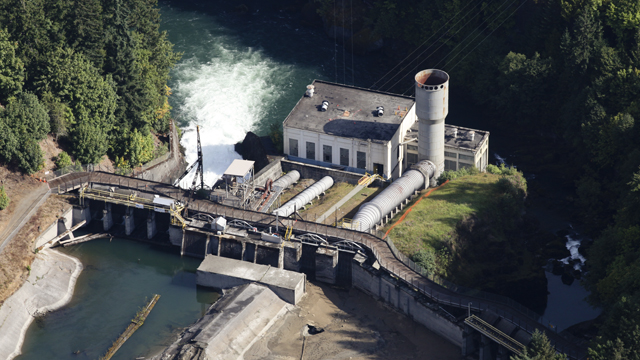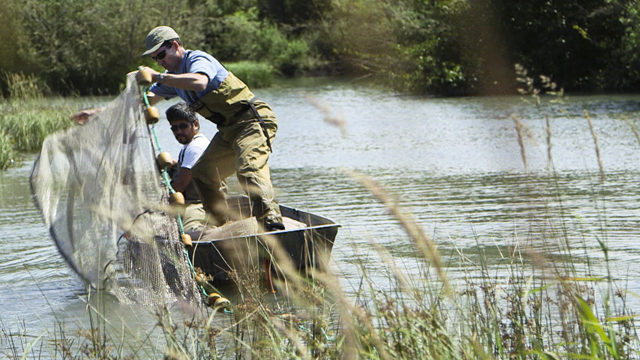 Sunlight streaks through the leafy canopy, painting the Elwha River and surrounding forest in dappled light. Two men in chest waders splash through the swift-moving current, kicking up mushroom clouds of silt. Their eyes scan the shallows as they make their way downstream.
Sunlight streaks through the leafy canopy, painting the Elwha River and surrounding forest in dappled light. Two men in chest waders splash through the swift-moving current, kicking up mushroom clouds of silt. Their eyes scan the shallows as they make their way downstream.
John McMillan, a fish biologist with the National Oceanic and Atmospheric Administration, and Jeff Duda, a research ecologist with the U.S. Geological Survey, are here looking for steelhead and salmon nests, or redds, where fish have laid eggs. The signs are subtle but unmistakable to their trained eyes — a depression in the river bottom and disturbed gravel.
McMillan and Duda are just two of the many scientists from federal and state agencies and the local Native American tribe, who are studying the dramatic changes taking place on this river. Two massive hydroelectric dams are in the process of being removed. And these scientists are trying to understand how the largest dam removal project in the nation’s history is impacting fish.
“We’re trying to see how fast these fish recolonize after the dams have been removed,” McMillan said.
The Elwha River in western Washington State was once home to one of the biggest salmon runs in the continental United States. But in the early 1900s two dams were built on this pristine river, which today lies mostly within the protected confines of Olympic National Park. The dams provided power to the nearby town of Port Angeles and helped the frontier community grow and thrive.

But the dams were built without fish ladders and had devastating consequences for fish; salmon returning from the ocean to spawn were cut off from their natal waters. Only the lower five miles of the 45-mile river were accessible to them. Over time the dams starved those five miles of the sediment salmon need for building their nests. The diminished and degraded habitat decimated fish populations in a river once known for producing 100-pound salmon.
